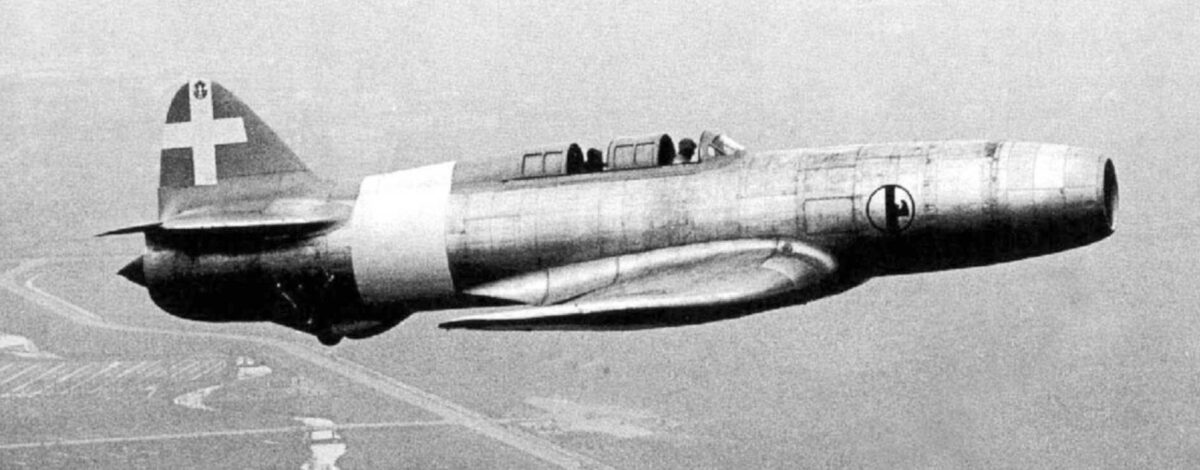Caproni Campini N.1
In August 1940 an Italian airplane took to the sky without a propeller, grandly signaling that aviation stood on the threshold of a new age. Or so the world thought. It was only later that the world learned that Germany had in fact ushered in the jet age a year earlier, with the Heinkel He-178. Until the Germans saw fit to reveal that secret, however, the Caproni Campini N.1 enjoyed a brief moment in the sun as the world’s first jet airplane to fly.
While Hans von Ohain and Frank Whittle labored on their turbojets in Germany and Britain, respectively, Italian aeronautical engineer Secondo Campini developed what he called a thermojet, which he successfully demonstrated on a boat in Venice—the first jet-propelled vehicle of any kind—in 1932. That soon led to a contract from Benito Mussolini’s government to develop a jet airplane for the Regia Aeronautica, which ordered two prototypes in 1934. The first Campini N.1 made its maiden flight from Taliedo with one of Italy’s most experienced pilots, Mario de Bernardi, at the controls on August 27, 1940.
Given its experimental nature, it would be unkind to expect exceptional performance from the two-seat aircraft, but it was rather large, with a wingspan of 52 feet, a wing area of 390 square feet and a height of 15 feet 5 inches. Empty weight was 8,025 pounds, increasing to 9,248 pounds fully loaded. The thermojet engine was an Isotta-Fraschini L.121 R.C.40. What made it different from other turbos of the time was that its three-stage axial compressor was driven by a 900-hp reciprocating engine. Even with an afterburner the maximum speed was limited to 233 mph—slower than a Fiat C.R.42 biplane—and altitude to 4,000 feet.
Nevertheless, Mussolini basked in the glow of innovation (temporary though it would prove) and on November 30, 1941, de Bernardi and engineer Giovanni Pedace took the second prototype on a highly publicized 168-mile flight from Milan’s Linate Airport to Guidonia Airport in Rome, where it did a flypast for Il Duce himself. Average speed was a less-than-exhilarating 130 mph. By then, too, Whittle’s turbojet had taken to the air in the Gloster E.28/39 and Germany had test-flown its first attempt at a jet fighter, the Heinkel He-280.
Campini did continue with his experiments, limited by the full-scale global conflict for which Italian industry proved ill-prepared. Among other things, he worked on the Reggiane Re.2007 jet fighter, but its engine would be an imported German turbojet rather than his thermojet. In any case nothing came of it before the Allied invasion of Italy in September 1943 heralded the end.
Still, the Caproni Campini N.1 has its legitimate place in jet history, and one of the prototypes survives in the Italian Air Force Museum in Vigna di Valle near Rome. Additionally, a fuselage ground testbed can be seen at the National Museum of Science and Technology in Milan.

